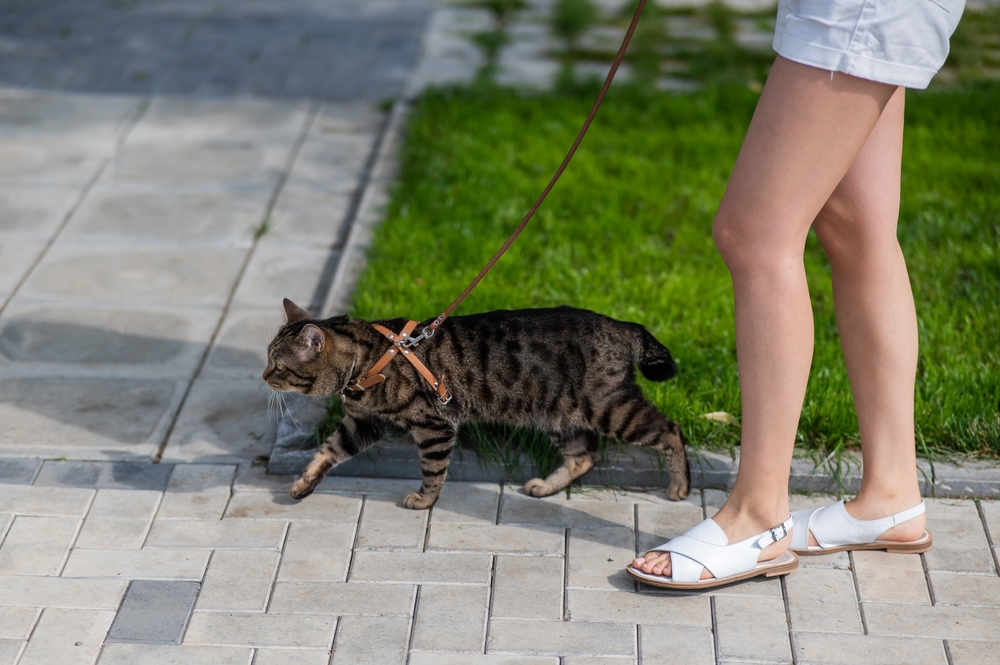While you enjoy summer outings with your four-legged companion, prolonged exposure to high temperatures can be dangerous for them and, in some cases, life-threatening. To keep your pet safe during the summer, you need to be aware of how heat can affect your furry friend. Our Oak Creek Veterinary Care team responds to five of your frequently asked questions (FAQs) about pet heat safety to help you keep your pet healthy and comfortable throughout the sizzling summer season.
Question: How do pets keep themselves cool?
Answer: Pets primarily cool themselves by evaporative cooling through panting, which involves rapid, shallow breathing that allows moisture to evaporate from the tongue, nasal passages, and lungs, carrying heat away from the body. Unlike people, pets sweat only a small amount through their paw pads. Pets’ cooling methods are less effective than ours, and they are highly susceptible to overheating.
Q: What is my pet’s risk of overheating?
A: All pets are susceptible to overheating, but some have a higher risk than others. Certain breeds and pets with health conditions can overheat easily, including:
- Brachycephalic pets — Brachycephalic (i.e., flat-faced) breeds’ facial structure can cause breathing problems and inefficient cooling, increasing their susceptibility to heat-related conditions such as heatstroke.
- Overweight pets — Overweight or obese pets have an increased heatstroke risk because extra fat layers act as insulation, decreasing their ability to cool down. Large, muscular pets, such as giant breeds, also have an increased overheating risk.
- Senior pets — As pets age, their cardiovascular and respiratory functions decrease. They may not dissipate excess body heat as efficiently as young pets and are more likely to develop heatstroke.
- Previous heatstroke — Pets who have had a previous heatstroke episode are prone to experiencing another. Therefore, if your pet has developed heatstroke in the past, ensure you monitor them closely when they are outdoors during hot or humid conditions.
Q: What are overheating signs in pets?
A: Early signs of heat exhaustion and heatstroke can be difficult to identify and usually begin with your pet panting heavier than normal. Once your pet begins to overheat, heatstroke progresses quickly. Recognizing the signs and acting immediately can save your pet from long-term complications or death. Pets’ most common heatstroke signs include:
- Thick, stringy saliva
- Bright red gums and tongue
- Disorientation
- Lethargy
- Vomiting
- Diarrhea
- Collapse
- Seizure
Q: What should I do if my pet overheats?
A: If your pet exhibits heat stress signs, bring them inside immediately. To help prevent your pet from developing heatstroke, do the following:
- Take their temperature — A pet’s normal temperature is between 101 and 102.5 degrees, so they are overheated if their temperature is 103 degrees or higher.
- Cool them with water — Place your pet in a bathtub with cool water. Do not use ice-cold water, because it can cause blood vessels to constrict, trapping their body heat and increasing your four-legged companion’s temperature.
- Monitor your pet — Check your pet’s temperature every five minutes, and keep them in the cool water until their temperature drops to at least 103 degrees.
- Seek veterinary care — To determine whether your pet has experienced organ damage and provide emergency treatment, contact our Oak Creek Veterinary Care team, and we will perform a thorough physical examination.
Q: How can I prevent my pet from overheating?

A: By taking heat safety measures during the summer, you can help ensure your pet stays cool and comfortable while preventing heat exhaustion and heatstroke. To help your pet beat the heat, follow these tips:
- Provide plenty of water — Hydration is essential for your pet, especially on hot days. Ensure your four-legged companion always has access to cool, fresh water. Check their bowl frequently throughout the day to ensure it is never empty.
- Seek out shade — When your pet is outdoors, ensure they have a shady area to which they can retreat to get out of the blazing sun. In addition, ensure the shaded area has adequate ventilation.
- Exercise during the coolest time of day — Early morning is the coolest time to be outdoors with your pet when the temperature and humidity are often at their lowest point.
- Protect your pet’s paws — Your pet’s feet are extremely sensitive, and a short walk across blistering hot pavement, such as sun-soaked asphalt, can easily burn their paw pads. Always check the pavement with the back of your hand before you allow your pet to traverse it. If the pavement is too hot for your hand, the surface is too hot for your pet’s paws.
- Leave your pet at home — You may be tempted to leave your pet briefly unattended in your vehicle. Don’t do it! Even with the windows cracked open, your vehicle’s interior temperature can rise more than 20 degrees in only 10 minutes. If you intend to run an errand to a business that is not pet-friendly, leave your furry pal at home, where they can remain cool, comfortable, and safe.
Summer is a great time to enjoy the outdoors and create memories with your pet. By following our heat safety tips, you can help ensure your furry pal enjoys the summer as much as you do. If you have additional questions about pet heat safety or want to schedule your four-legged companion’s annual wellness exam, schedule an appointment with our Oak Creek Veterinary Care team.







Leave A Comment